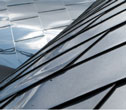Let me stipulate I'm all for saving energy and preserving the environment. Like fine wine, tax cuts and Chicago Cubs victories, more is always better.
Let me also stipulate the green building movement has created some great opportunities for our members and the roofing industry. Contractors use more insulation. They install vegetative and photovoltaic roof systems. And owners and designers are much more interested in their roofs than ever before. All this is incredibly positive.
But we need to be sure in our enthusiasm for energy and environmental improvements that we make good decisions based on good science. Absent that, the roofing industry faces some significant unintended consequences. Consider:
- Using lightweight concrete, rather than traditional concrete, can earn a building two LEED® points. But we're learning lightweight structural concrete roof decks can retain moisture for a long time and have contributed to serious roof system problems. (A roof system, alas, usually earns only one LEED point.)
- The use of volatile organic compounds (VOCs) is prohibited in adhesives and sealants in some parts of the U.S., so the industry is using more low-VOC and water-based adhesives. That's good for the environment but not so good for actually adhering things. Some adhesives can only be applied, according to their manufacturers, when the temperature is between 50 F and 80 F. Good luck with that in, say, Las Vegas during summer.
- A well-credentialed faculty member at Stanford University's engineering department studied the effects of reflective roof surfaces and concluded they may actually contribute to global warming. His theory is reflected solar energy destroys cloud cover, leading to more solar energy, which leads to higher temperatures.
- New building code requirements call for the use of building materials "harvested" (that's code-speak) within 500 miles of a construction site. That's good for reducing transportation-related carbon emissions, but no one is quite sure how to harvest asphalt in South Dakota, for instance.
Consider these cautionary notes in the bigger picture of saving energy and preserving the environment. We will undoubtedly find solutions over time, which will result in better, more efficient buildings. But when change occurs as rapidly as it has during the past few years, it's important, every once in a while, to remember change usually brings some surprises, too.
Bill Good is NRCA's executive vice president.



